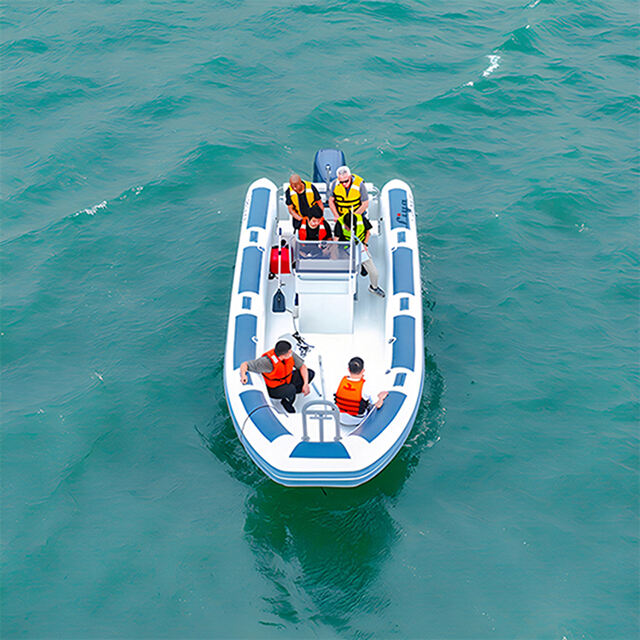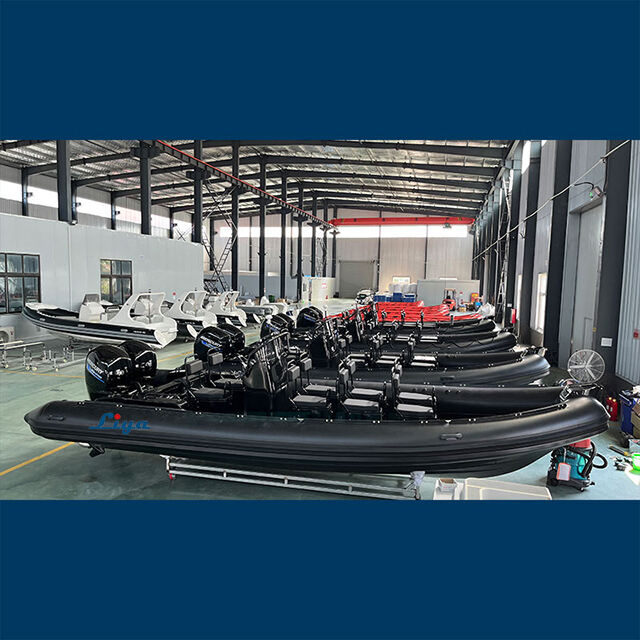Understanding the Superior Design of RHIB Vessels
The maritime industry has witnessed numerous innovations over the decades, but few have made as significant an impact as the Rigid Hull Inflatable Boat (RHIB). These remarkable vessels combine the robustness of a solid hull with the buoyancy and stability of inflatable tubes, creating a watercraft that excels in multiple environments and applications. From military operations to recreational boating, RHIB boats have revolutionized how we approach maritime activities, offering unparalleled versatility and performance on the water.
The unique construction of a RHIB boat sets it apart from traditional vessels, incorporating cutting-edge materials and engineering principles to deliver exceptional performance. The rigid hull provides the foundation for superior handling and speed, while the inflatable collar ensures remarkable stability and safety. This innovative design has made RHIB boats the preferred choice for various maritime operations, from high-speed pursuits to rescue missions.
Engineering Excellence in RHIB Design
Advanced Hull Construction
At the heart of every RHIB boat lies its expertly engineered hull. Constructed from marine-grade materials such as fiberglass, aluminum, or advanced composites, the hull is designed to cut through waves efficiently while maintaining structural integrity. The deep-V configuration common in modern RHIB boats enables them to handle rough waters with ease, reducing impact and improving overall ride comfort. This sophisticated hull design also contributes to fuel efficiency and enhanced maneuverability.
The hull's construction incorporates strategic reinforcement points and carefully calculated weight distribution, ensuring optimal performance across various speed ranges. Advanced manufacturing techniques allow for precise control over hull thickness and shape, resulting in a vessel that combines durability with exceptional hydrodynamic properties.
Innovative Tube Technology
The inflatable collar that characterizes a RHIB boat is far more sophisticated than it might appear. Modern tubes are constructed from military-grade materials such as Hypalon or polyurethane, offering exceptional resistance to UV radiation, chemical exposure, and physical abuse. These tubes are divided into multiple independent chambers, providing redundancy and ensuring flotation even if one section becomes compromised.
The precise positioning and design of the tubes contribute significantly to the RHIB's performance characteristics. They provide additional stability at rest and during high-speed maneuvers, while also offering improved shock absorption in rough conditions. The tubes' buoyancy characteristics help maintain an optimal running angle, enhancing both speed and fuel efficiency.

Performance Advantages of RHIB Vessels
Superior Speed Capabilities
RHIB boats are renowned for their impressive speed capabilities, regularly achieving high velocities while maintaining stability and control. The combination of a lightweight yet robust hull design and powerful propulsion systems allows these vessels to accelerate quickly and maintain high cruising speeds. The hydrodynamic efficiency of the hull design reduces drag, while the tubes help maintain optimal trim angles at various speeds.
Modern RHIB boats often feature advanced propulsion systems, including high-performance outboard engines or sophisticated inboard configurations. These power plants are carefully matched to the hull design and intended use, providing the perfect balance of speed, fuel efficiency, and reliability. The result is a vessel capable of sustained high-speed operation without compromising safety or comfort.
Exceptional Stability Features
One of the most distinctive advantages of a RHIB boat is its remarkable stability characteristics. The inflatable collar provides tremendous secondary stability, making these vessels extremely difficult to capsize. This inherent stability is particularly valuable in rough conditions or when conducting sensitive operations at sea. The tubes act as a natural stabilizer, reducing roll motion and providing a secure platform for various activities.
The stability of RHIB boats is further enhanced by their sophisticated weight distribution and center of gravity calculations. The placement of equipment, fuel tanks, and other components is carefully considered to optimize stability while maintaining performance. This attention to detail results in a vessel that remains composed and controllable even in challenging conditions.
Versatility and Applications
Professional Maritime Operations
RHIB boats have become indispensable tools for professional maritime organizations worldwide. Military and law enforcement agencies utilize these vessels for patrol duties, interdiction operations, and rapid response missions. Their combination of speed, stability, and maneuverability makes them ideal for these demanding roles. Search and rescue organizations rely on RHIB boats for their ability to operate safely in adverse conditions while providing a stable platform for rescue operations.
The commercial sector has also embraced RHIB boats for various applications, including offshore wind farm maintenance, marine research, and professional diving support. Their versatility and reliability make them cost-effective solutions for organizations requiring capable maritime platforms.
Recreational Excellence
The recreational boating community has discovered the numerous advantages of RHIB boats for leisure activities. Whether used for diving, fishing, or day cruising, these vessels offer an exceptional blend of performance and practicality. The stable platform provided by the RHIB design makes them ideal for water sports and family activities, while their seaworthiness inspires confidence in varying conditions.
Modern recreational RHIB boats often feature sophisticated amenities and comfort features, making them suitable for extended trips and entertainment. Their efficient operation and reliable performance characteristics have made them increasingly popular among discerning recreational boaters seeking versatile vessels.
Frequently Asked Questions
What maintenance does a RHIB boat require?
RHIB boats require regular maintenance of both the rigid hull and inflatable tubes. This includes cleaning and protecting the tubes from UV damage, maintaining proper inflation pressures, checking hull integrity, and following standard marine engine maintenance schedules. Professional inspection of tube seams and valve systems is recommended annually.
How long do inflatable tubes typically last?
Quality RHIB boat tubes, when properly maintained, can last 10-15 years or more. Factors affecting longevity include exposure to UV radiation, storage conditions, usage patterns, and maintenance practices. Modern tube materials like Hypalon offer exceptional durability and resistance to environmental factors.
Are RHIB boats suitable for offshore use?
RHIB boats are extremely capable offshore vessels when properly sized and equipped. Their design provides excellent seaworthiness, and many models are specifically built for offshore operations. However, it's essential to choose a RHIB boat appropriately sized and rated for intended offshore use and to always observe proper safety protocols.
What advantages do RHIB boats offer over traditional rigid boats?
RHIB boats offer several key advantages over traditional rigid boats, including enhanced stability, better shock absorption in rough conditions, increased buoyancy, and improved safety through the inflatable collar design. They typically provide superior performance in terms of speed and fuel efficiency while maintaining excellent load-carrying capabilities and versatility.

